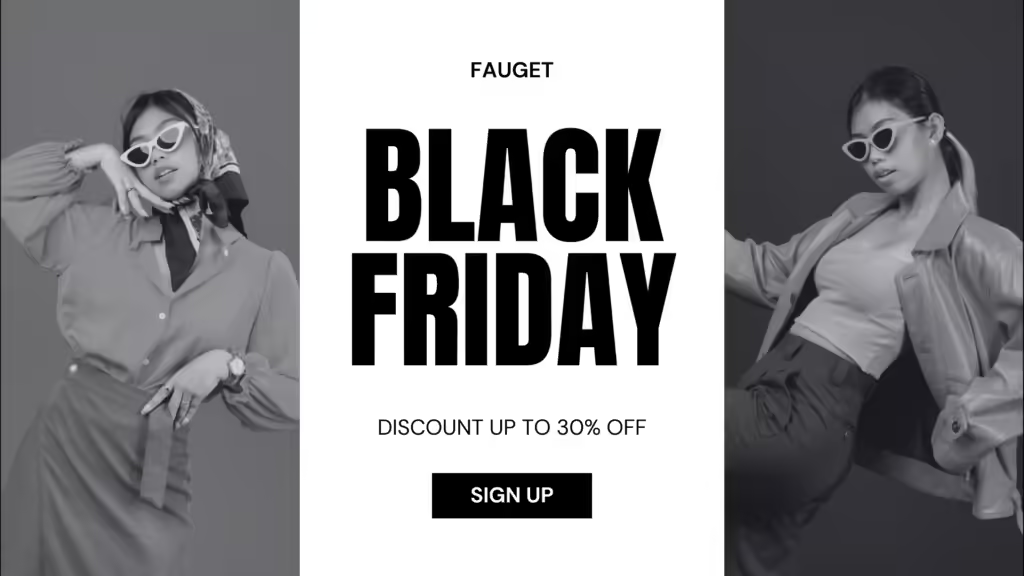Black Friday has evolved into a pivotal event for retailers, offering a myriad of deal types that cater to diverse consumer preferences. From doorbusters and flash sales to bundle offers and early bird discounts, the landscape is rich with opportunities to attract shoppers. However, navigating this crowded marketplace requires a strategic approach to stand out and maximize your sales. In this guide, we’ll explore how to effectively run Black Friday deals by understanding consumer behavior and implementing proven strategies.
Understanding the Black Friday Landscape
Black Friday has transformed from a single-day event into a multi-day shopping extravaganza. Retailers offer a variety of deals to capture consumer interest, including:
- Doorbusters: Deep discounts on select items to drive foot traffic.
- Flash Sales: Limited-time offers that create urgency.
- Bundle Deals: Packages that provide added value by combining products.
- Early Bird Discounts: Special prices for customers who shop early.
- Buy One, Get One (BOGO): Incentives that encourage higher purchase volumes.
- Exclusive Online Offers: Deals available only through e-commerce channels.
- Loyalty Program Rewards: Special discounts for members to foster loyalty.
With such a wide array of options, choosing the right deal requires a deep understanding of why consumers flock to Black Friday.
Why Consumers Buy on Black Friday
To select the most effective Black Friday deals, it’s essential to grasp the motivations driving consumers during this period. According to the National Retail Federation (NRF), Americans are starting their holiday shopping earlier, with Thanksgiving weekend being a critical time for millions. Here are key insights into Black Friday shoppers:
- Early Holiday Shopping: Shoppers are keen to complete their holiday lists early to avoid last-minute stress. The average consumer spent $361.90 on holiday items over a five-day period, up 16% from the previous year.
- Gift-Focused Spending: A significant portion of spending ($257.33 or 71%) was dedicated to gifts, with the highest spenders being aged 25-34.
- Omnichannel Shopping: Consumers seamlessly switch between online and in-store shopping, with 124 million shopping in stores and 142.2 million online. Notably, 75.7 million engaged in both, spending 25% more than those who shopped via a single channel.
- Deal-Driven Purchases: Free shipping and limited-time promotions are top motivators, cited by 49% and 36% of shoppers, respectively.
- Mobile Influence: 75% of consumers used mobile devices to research, compare prices, or make purchases, highlighting the importance of mobile-friendly strategies.
Understanding these behaviors allows retailers to tailor their Black Friday deals to meet consumer expectations effectively.
Defining Your Black Friday Goals
Before diving into specific strategies, it’s crucial to define your objectives for Black Friday. Common goals include:
- Increasing Sales: Boost overall revenue through attractive deals.
- Driving Site Traffic: Enhance website visits to improve brand visibility and potential conversions.
- Growing Email Lists: Capture leads by encouraging sign-ups for future marketing.
- Enhancing Loyalty Program Signups: Expand your customer base through loyalty incentives.
Clear goals will guide your strategy selection and ensure your efforts align with desired outcomes.
Effective Strategies for Your Black Friday Campaign
Website Strategies
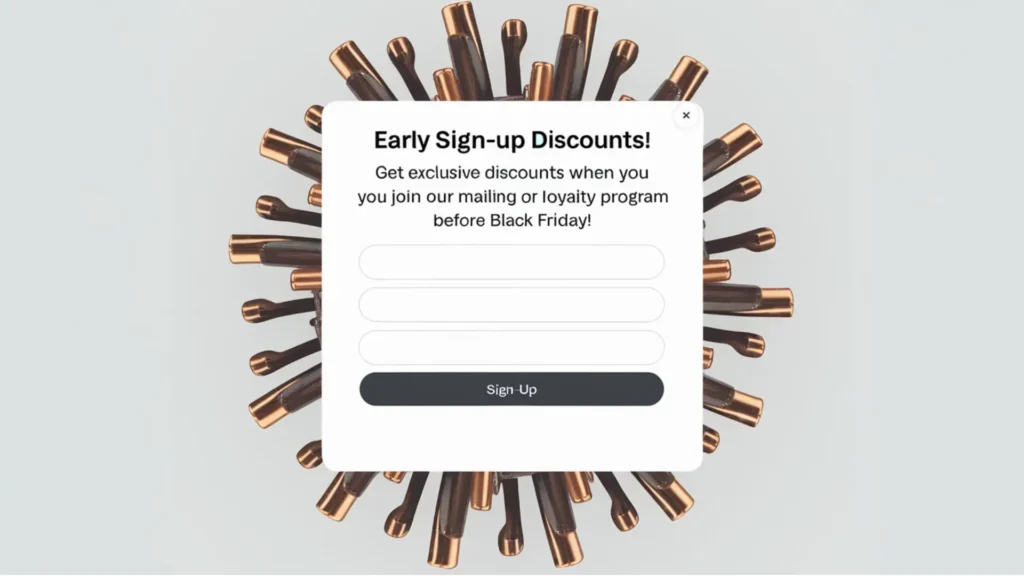
- Early Sign-Up Discounts
- Description: Encourage customers to join your mailing list or loyalty program before Black Friday by offering exclusive discounts.
- Implementation: Provide a sign-up form that immediately sends a discount code upon registration. Alternatively, offer a code that becomes active on Black Friday.
- Psychological Appeal: Creates a sense of exclusivity and rewards early commitment.
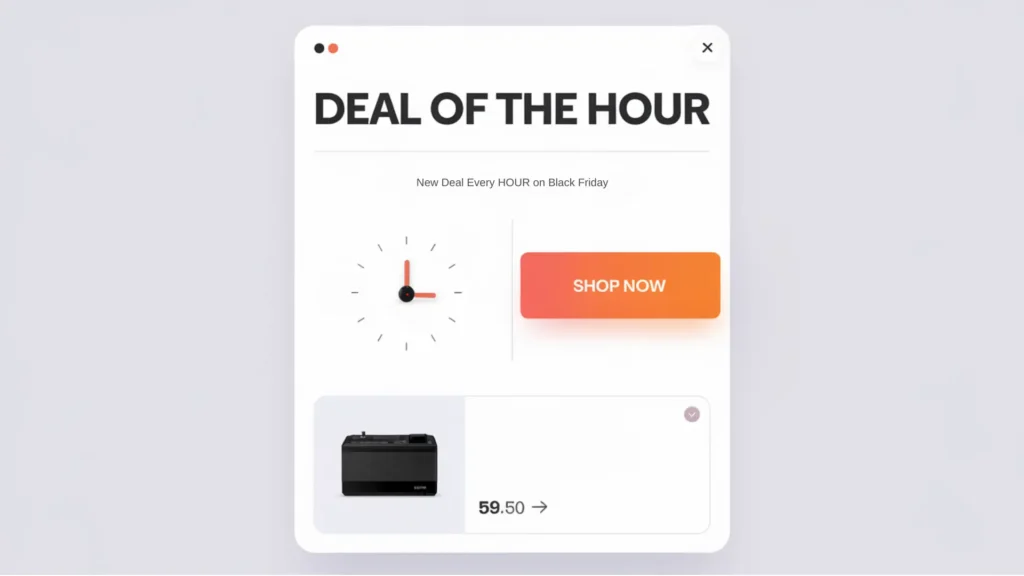
- Deal of the Hour
- Description: Launch a new deal every hour to keep shoppers engaged throughout the day.
- Implementation: Feature a countdown timer and update the homepage with the latest hourly deal.
- Psychological Appeal: Generates urgency and encourages repeat visits to discover new offers.
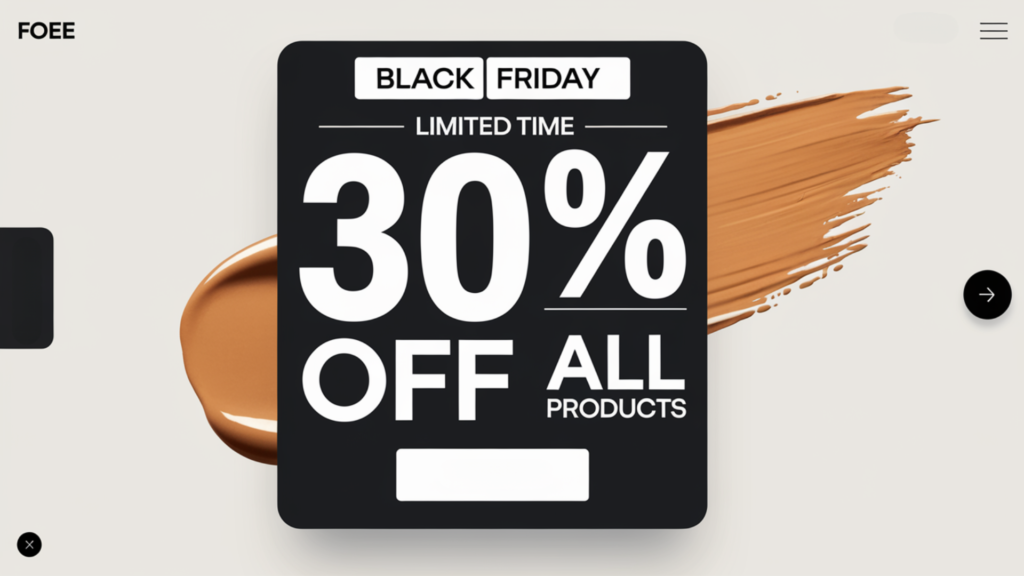
Limited-Time Popups
- Description: Use popups that appear after a certain time or action, highlighting time-sensitive deals.
- Implementation: Trigger popups when users show exit intent or after browsing for a set period.
- Psychological Appeal: Leverages FOMO (Fear of Missing Out) to prompt immediate action.
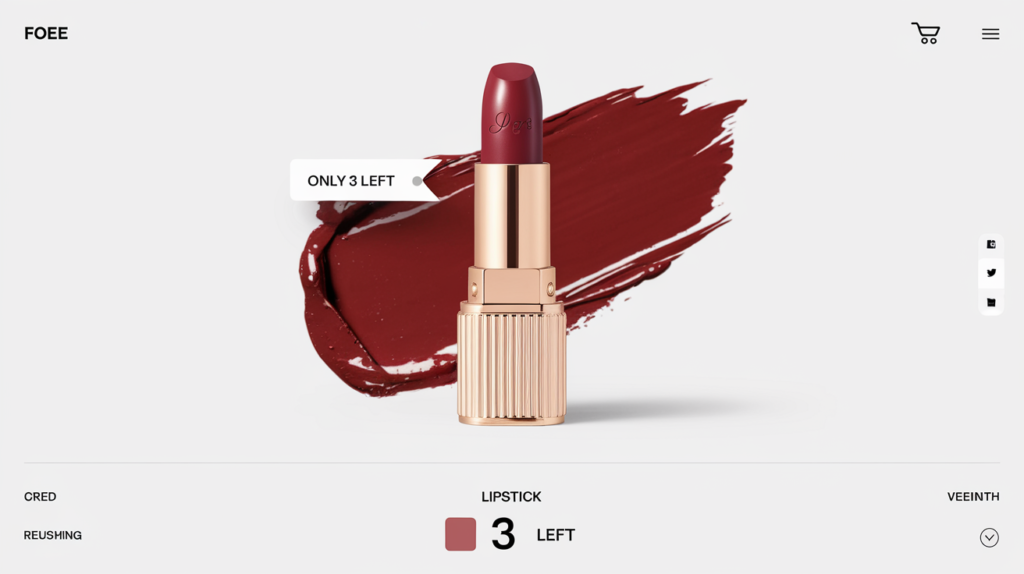
Scarcity Banners and Indications
- Description: Display limited stock levels to create a sense of scarcity.
- Implementation: Show messages like “Only 3 left in stock” near product listings.
- Psychological Appeal: Encourages quick purchasing decisions to avoid missing out.
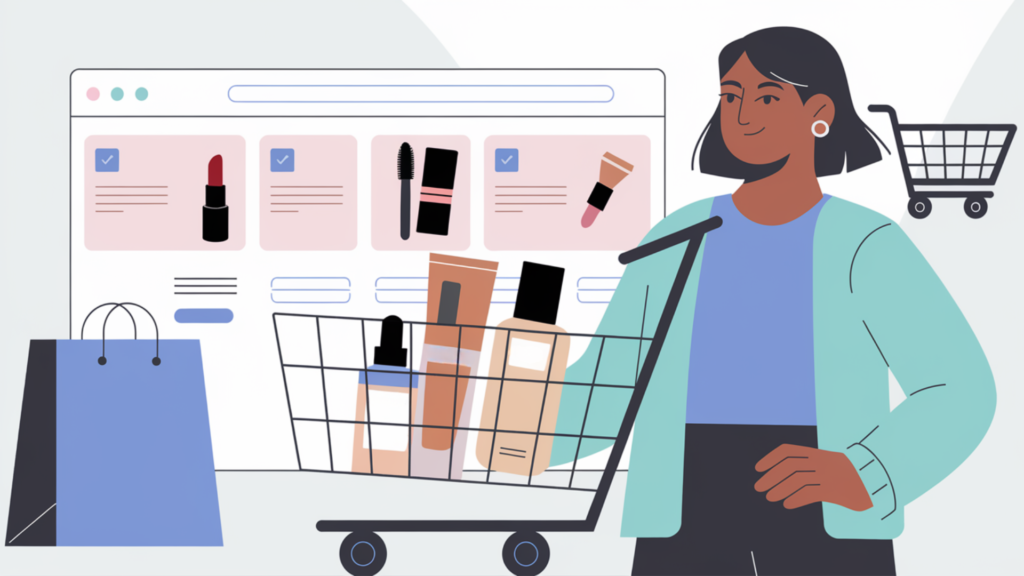
Personalized Recommendations
- Description: Tailor deals based on user behavior and preferences.
- Implementation: Utilize data analytics to suggest products that individual shoppers are likely to purchase.
- Psychological Appeal: Enhances the shopping experience by making offers feel more relevant and personalized.
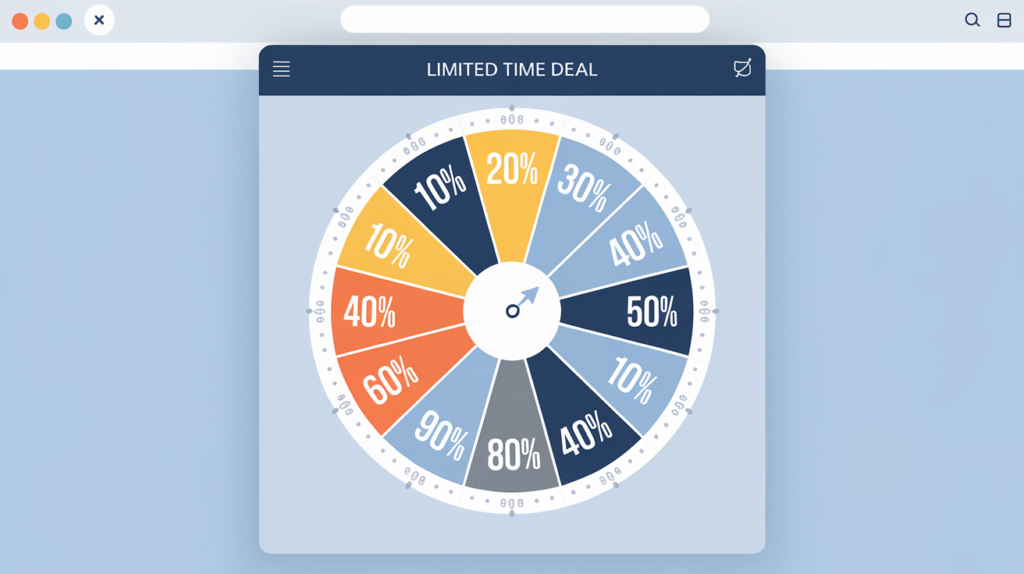
Gamified Elements
- Description: Introduce interactive elements like spin-to-win wheels or scratch cards for additional discounts.
- Implementation: Add a gamified feature that allows users to unlock extra savings through engagement.
- Psychological Appeal: Increases user engagement and adds an element of fun to the shopping experience.
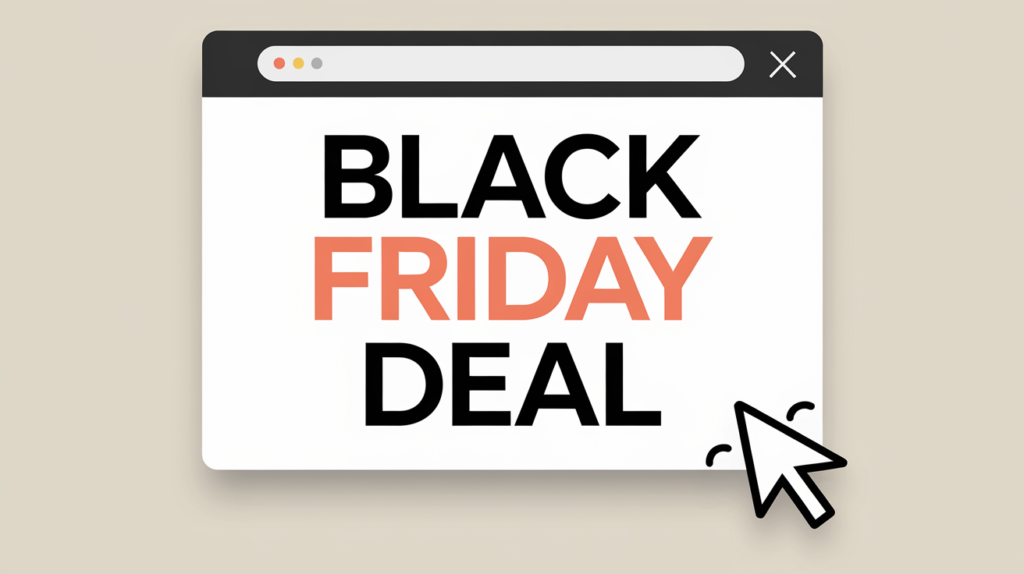
Exit-Intent Offers
- Description: Present special deals when a user attempts to leave the site without making a purchase.
- Implementation: Deploy exit-intent technology to trigger a popup with a last-minute discount.
- Psychological Appeal: Captures potential lost sales by offering an irresistible deal at the critical moment.
Email Marketing Strategies
- Accidental Early Black Friday Promo Code Slip
- Description: Send an email that appears to be an internal communication accidentally sent to customers.
- Implementation: Craft an email that looks like it’s from an employee to another, containing a promo code with instructions to use it. Limit the offer to the first 1,000 users to create exclusivity.
- Psychological Appeal: Creates a sense of insider access and urgency, prompting quick action to secure the deal.
- Exclusive Pre-Sale Access for Subscribers
- Description: Offer your email subscribers early access to Black Friday deals before they’re available to the general public.
- Implementation: Send a dedicated email to subscribers with a unique link or code that grants early access to sales.
- Psychological Appeal: Rewards loyalty and makes subscribers feel valued, encouraging continued engagement and sign-ups.
- Countdown Series Emails
- Description: Implement a series of emails leading up to Black Friday, each highlighting different deals and building anticipation.
- Implementation: Schedule emails that count down the days, each featuring exclusive previews or sneak peeks of upcoming offers.
- Psychological Appeal: Builds excitement and keeps your brand top-of-mind, increasing the likelihood of purchases when Black Friday arrives.
Leveraging Psychology and Strategic Tricks
To maximize the effectiveness of your Black Friday deals, incorporate psychological principles and subtle tactics that resonate with consumer behavior:
- Urgency and Scarcity: Limited-time offers and low stock notifications compel consumers to act quickly.
- Social Proof: Highlighting popular items or showing real-time purchase counts can reassure shoppers of the deal’s value.
- Anchoring: Display original prices alongside discounted prices to emphasize the savings.
- Reciprocity: Offering free gifts or additional discounts can make customers feel obliged to make a purchase.
- Simplicity: Ensure your deals are easy to understand and redeem, reducing friction in the purchasing process.
By thoughtfully applying these strategies and psychological triggers, you can create compelling Black Friday deals that not only attract shoppers but also drive significant sales growth.
Conclusion
Running successful Black Friday deals requires a blend of understanding consumer motivations, setting clear goals, and implementing strategic marketing tactics. By leveraging data-driven insights and psychological principles, retailers can design offers that resonate with shoppers and stand out in a crowded marketplace. Whether through innovative website strategies or creative email marketing campaigns, the key is to create a seamless and enticing shopping experience that encourages consumers to choose your brand during the busiest shopping season of the year.
